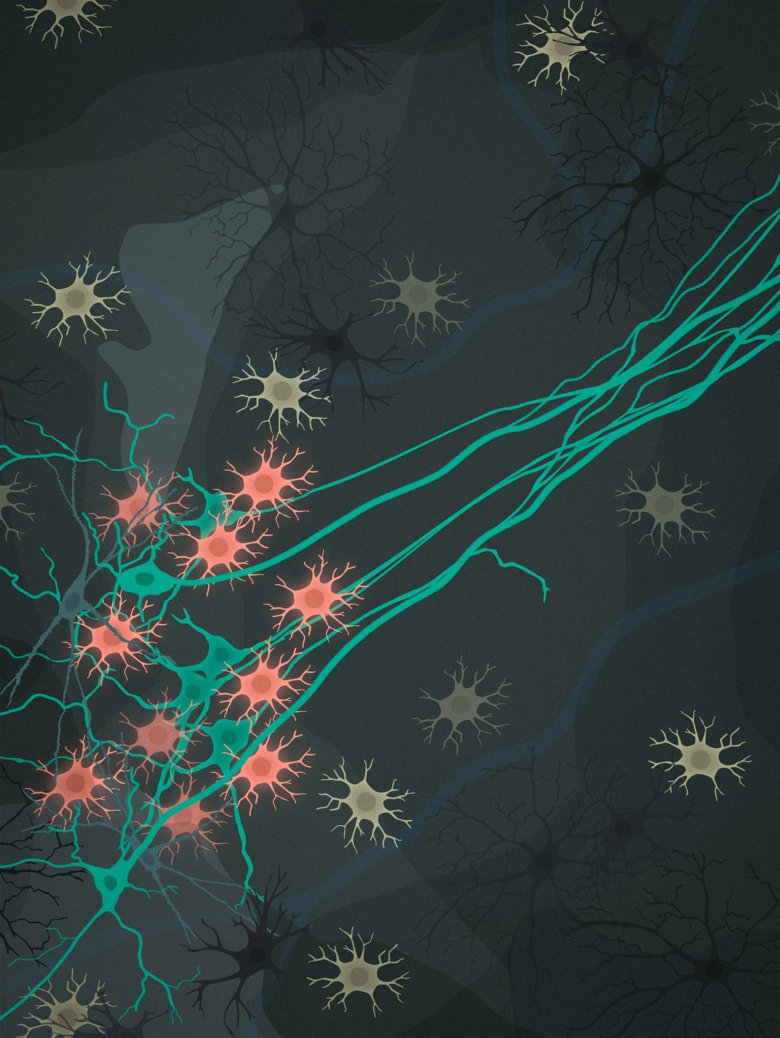Increased knowledge about brain development and cognitive ability

New findings on how a subset of immune cells in the brain is involved in the establishment of a neuronal system controlling cognition.
Cognitive deficiency or decline are common features of neurodevelopmental disorders (such as autism spectrum disorders or attention-deficit/hyperactivity disorder) and neurodegenerative disorders (like Alzheimer disease or dementia). Cognitive capabilities rely heavily on an accurately established and functional neuronal cholinergic system.
In a study published in the journal Nature Neuroscience, an international research team led from the Institute of Environmental Medicine, Karolinska Institutet, Sweden and Universidad de Sevilla, Spain now describes how a particular subset of microglia, the resident immune cells of the brain, which expresses the enzyme Arginase-1, and which they named ARG1+microglia, contributes to the establishment of the neuronal cholinergic system during early postnatal mouse development.
Using whole brain imaging, ARG1+microglia were found to be located in specific regions of the developing mouse brain, predominantly in the basal forebrain and ventral striatum, where cholinergic neurons are found in large numbers. Genome wide RNA-sequencing analysis demonstrated that ARG1+microglia present a distinct gene expression profile, as compared to the ARG1-non expressing microglia. Additional imaging at the ultrastructural level using electron microscopy further revealed that neuronal material was found within the ARG1+microglia. Deficiency for the ARG1+microglia subtype in mice, was associated with impaired maturation and function of the projections made by cholinergic neurons into the hippocampus, a brain region essential to cognitive functions. Finally, female, but not male, ARG1+microglia-deficient mice were shown to exhibit significant cognitive behavioural deficiencies.
Beyond offering of better understanding of the brain development, and the contribution of microglia diversity to that one, the study could provide new cues on how to manage neurodevelopmental disorders or neurodegenerative disorders presenting a cognitive component and often differences between male and female.
This study highlights the importance of diversity: 1) to understand the multitasking microglia, with its unique subtypes and associated functions, aiming at uncovering new potential therapeutic targets to combat brain disorders; and 2) to achieve scientific milestones, as illustrated by the synergic effect of combining over a long period of time the efforts of multiple research teams with diverse scientific expertise and unique technical knowhow.
The lead author of the study is Vassilis Stratoulias at the Institute of Environmental Medicine, Karolinska Institutet. Researchers from Karolinska Institutet (Dept. of Medical Biochemistry and Biophysics, Dept. of Women's and Children's Health, Dept. of Biosciences and Nutrition), Umeå University and Örebro University in Sweden, Universidad de Sevilla and the University of Pablo de Olavide in Spain, University of Helsinki in Finland, Université Laval and the University of Victoria in Canada, the University of Bonn in Germany and also others contributed to the study. The research was financed with grants from, amongst others, the Swedish Research Council, the Swedish Cancer Foundation, the Swedish Childhood Cancer Foundation, the Swedish Cancer Society, the Swedish Brain Fund, StratCan, StratNeuro, StratRegen the Wenner-Gren Foundation, the Åke Wibergs Stiftelse, the Karolinska Institutet Foundation and agreement with Stockholm County Council, and the Swedish governmental grants for researchers working in healthcare.
Publication
ARG1-expressing microglia show a distinct molecular signature and modulate postnatal development and function of the mouse brain
Vassilis Stratoulias, Rocío Ruiz, Shigeaki Kanatani, Ahmed M. Osman, Lily Keane, Jose A. Armengol, Antonio Rodríguez-Moreno, Adriana-Natalia Murgoci, Irene García-Domínguez, Isabel Alonso-Bellido, Fernando González Ibáñez, Katherine Picard, Guillermo Vázquez-Cabrera, Mercedes Posada-Pérez, Nathalie Vernoux, Dario Tejera, Kathleen Grabert, Mathilde Cheray, Patricia González-Rodríguez, Eva M. Pérez-Villegas, Irene Martínez-Gallego, Alejandro Lastra-Romero, David Brodin, Javier Avila-Cariño, Yang Cao, Mikko Airavaara, Per Uhlén, Michael T. Heneka, Marie-Ève Tremblay, Klas Blomgren, Jose L. Venero and Bertrand Joseph.
Nature Neuroscience
DOI : 10.1038/s41593-023-01326-3
